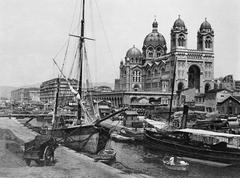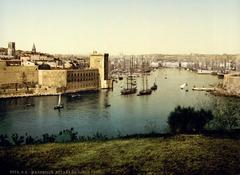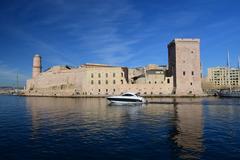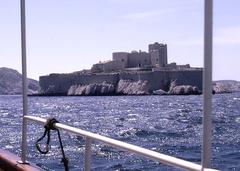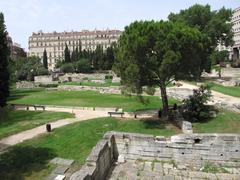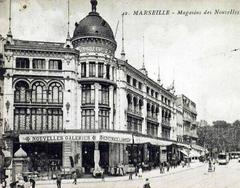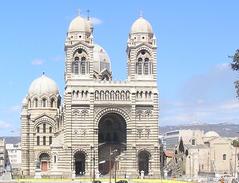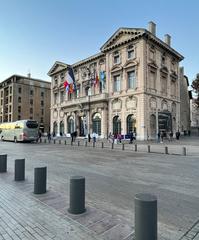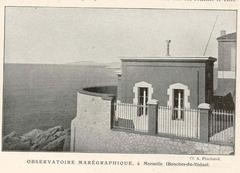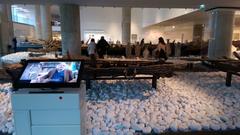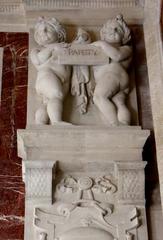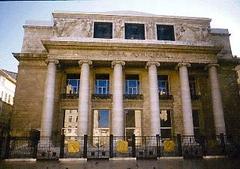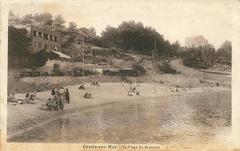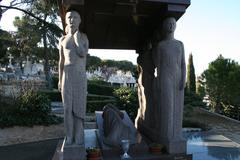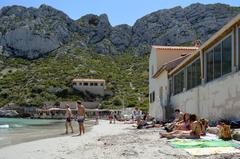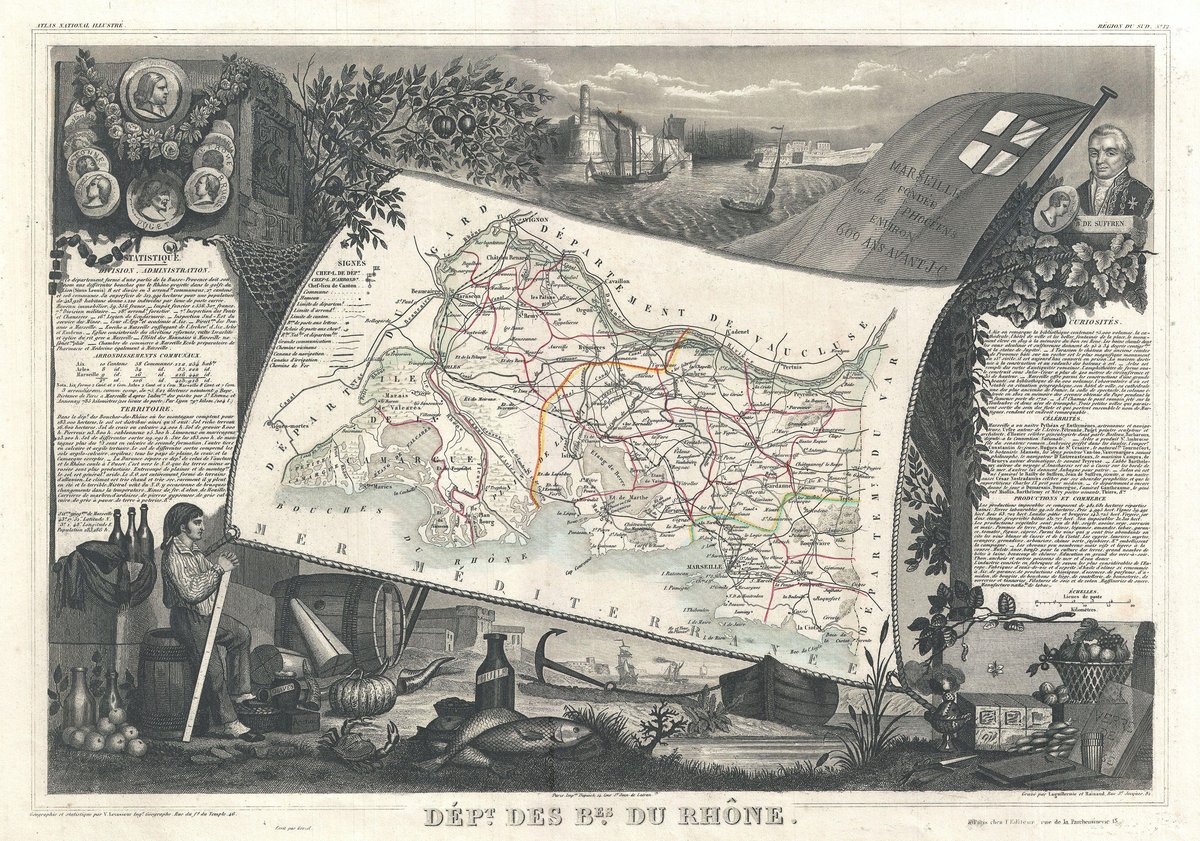
Visiting Fort Saint-Jean in Marseille: A Comprehensive Guide
Date: 31/07/2024
Introduction
Fort Saint-Jean, a monumental fortress situated at the entrance of Marseille’s Old Port, stands as a testament to centuries of French history and architectural prowess. Dating back to the 12th century, this iconic site has evolved from a medieval commandery to a prominent cultural landmark, now integrated into the Museum of European and Mediterranean Civilisations (MuCEM). From its origins with the Military Order of the Knights Hospitaller to its strategic military roles under King Louis XIV and its use during the French Revolution and World War II, Fort Saint-Jean encapsulates a rich tapestry of historical events (Marseille Tourism, Wikipedia). Today, it attracts countless visitors who come to explore its ramparts, courtyards, and exhibition spaces, all while enjoying panoramic views of the Mediterranean Sea and Marseille’s skyline. This guide provides a comprehensive overview of Fort Saint-Jean’s history, visitor information, travel tips, and more, ensuring an enriching experience for all who visit this remarkable fortress.
Table of Contents
- Introduction
- Early Beginnings and Medieval Period
- Construction Under Louis XIV
- Role During the French Revolution
- World War II and Subsequent Restoration
- Integration into MuCEM
- Key Architectural Features
- Historical Significance
- Visitor Experience
- Travel Tips and Nearby Attractions
- Special Events and Guided Tours
- FAQ
- Conclusion
Early Beginnings and Medieval Period
Fort Saint-Jean’s origins can be traced back to the 12th century when the site was occupied by the Military Order of the Knights Hospitaller of Saint John of Jerusalem. This commandery included a church, a chapel, a hospital, and the commander’s palace, completed in 1365 (Marseille Tourism). The fort’s name, “Fort Saint-Jean,” honors this historical association.
Construction Under Louis XIV
The fort as it stands today was constructed in 1660 by order of King Louis XIV. The construction was part of a broader strategy to reinforce royal authority in Marseille, which had experienced significant conflict with the monarchy from 1655 to 1660 (Wikipedia). The fort was built on the site previously occupied by the Knights Hospitaller, and its construction was overseen by Chevalier de Clerville between 1668 and 1671 (Marseille City of Culture).
Role During the French Revolution
During the French Revolution, Fort Saint-Jean served as a prison. After the fall of Robespierre, the Jacobins were imprisoned within its walls (History Hit). The fort’s strategic location and robust construction made it an ideal site for detaining political prisoners during this tumultuous period.
World War II and Subsequent Restoration
In World War II, the fort was occupied by the German military in November 1942. It was used as a munitions storage facility, which led to significant destruction when the stored ammunition exploded in August 1944 during the liberation of Marseille (Wikipedia). The explosion destroyed much of the historic battlements and buildings.
After the war, the fort was returned to the French Army but remained neglected until it was transferred to the Ministry of Cultural Affairs in 1960. It was classified as a historical monument in 1964, and the damaged portions were reconstructed between 1967 and 1971 (Marseille City of Culture).
Integration into MuCEM
In 2013, Fort Saint-Jean became part of the Museum of European and Mediterranean Civilisations (MuCEM). This integration included the construction of two footbridges linking the fort to the historical district of Le Panier and the MuCEM complex (Wikipedia). The fort now serves as a cultural and historical landmark, attracting numerous visitors each year.
Key Architectural Features
The fort comprises several notable structures, including the Tower of King René, the chapel of St. John, and the ruins of old barracks. The Tower of King René, built next to the original Tower of St. John, is one of the most beautiful buildings in Marseille that still stands today (Marseille Tourism). Additionally, the fort houses a memorial to those who died in the death camps, the church of St. Lawrence, and a lighthouse (Marseille City of Culture).
Historical Significance
Fort Saint-Jean’s historical significance is multifaceted. Initially serving as a commandery for the Knights Hospitaller, it later became a symbol of royal authority under Louis XIV. Its role as a prison during the French Revolution and its strategic use during World War II further underscore its importance in French history. Today, as part of MuCEM, it continues to be a vital cultural and historical site, offering insights into the region’s rich past (History Hit).
Visitor Experience
Visitors to Fort Saint-Jean can explore its various historical structures and enjoy panoramic views of the port and bay of Marseille. The fort is accessible via a footbridge from the Old Port, making it an integral part of the MuCEM experience (Marseille Tourism). The fort is open year-round, with varying hours depending on the season. Admission is included with a ticket to MuCEM, priced at 11 euros for adults and 7.50 euros for minors under 25 (Cestee).
Travel Tips and Nearby Attractions
When visiting Fort Saint-Jean, consider exploring nearby attractions such as the Old Port, Le Panier district, and the MuCEM complex. For the best experience, visit during the early morning or late afternoon to avoid crowds. Wear comfortable walking shoes and bring a camera to capture the stunning views and architectural details.
Special Events and Guided Tours
Fort Saint-Jean hosts various special events throughout the year, including historical reenactments, exhibitions, and cultural festivals. Guided tours are available, offering in-depth insights into the fort’s history and architecture. Check the official MuCEM website for the latest event schedule and tour availability.
FAQ
What are the visiting hours for Fort Saint-Jean?
The fort is open year-round, with varying hours depending on the season. Check the official MuCEM website for current visiting hours.
How much are tickets for Fort Saint-Jean?
Admission is included with a ticket to MuCEM, priced at 11 euros for adults and 7.50 euros for minors under 25 (Cestee).
Is Fort Saint-Jean accessible for people with disabilities?
Yes, Fort Saint-Jean is accessible for people with disabilities. There are ramps and elevators to facilitate access to different parts of the fort.
Are there guided tours available at Fort Saint-Jean?
Yes, guided tours are available and provide detailed historical and architectural insights. Check the official MuCEM website for tour schedules and availability.
Conclusion
Fort Saint-Jean stands as a testament to Marseille’s rich and turbulent history. From its medieval origins to its modern role as a cultural landmark, the fort encapsulates centuries of historical events and architectural evolution. Its integration into MuCEM ensures that it remains a vibrant part of Marseille’s cultural landscape, offering visitors a unique glimpse into the past while enjoying the beauty of the present. For the latest updates and more information, download the Audiala mobile app or follow us on social media.

